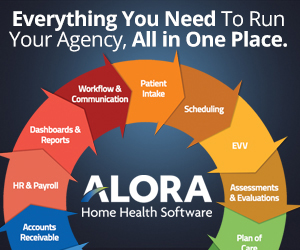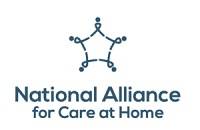 |
|||||||||||||||||||||||||||||
| September 12, 2024 | |||||||||||||||||||||||||||||
The Association’s Quality Improvement Committee is excited to offer a NEW resource, entitled “A Safety Guidance Toolkit” for our Home Health Care Agencies to help guide compliance to new state laws outlined in SB1/Public Act 24-19 An Act Concerning the Health and Safety of Connecticut Residents.
While this toolkit has many valuable links and resources, it is highly recommended that you review the resources internally before implementing to ensure a good fit for your agency processes and protocols.
Also, this is a MEMBERS ONLY toolkit which will be maintained on our “Members” section of the website. Please do not share outside your agency.
If you have any questions or feedback, please contact Tracy Wodatch (wodatch@cthealthcareathome.org).
Priority Senate Bill No 1, now signed into law as Public Act 24-19 An Act Concerning the Health and Safety of Connecticut Residents, included the creation of several important work groups including Safety and Pediatric Hospice. Both work groups will begin meeting this fall with charge to report recommendations to the Public Health Committee by 1/1/25 (Safety) and 3/1/25 (Pediatric Hospice).
The Association is proud to announce the following appointments to two of the key work groups for Safety and Pediatric Hospice. Congratulations!
Safety Work Group to study staff safety issues affecting Home Health and Hospice:
Work Group to study Pediatric Hospice Services in CT:
In June 2024, the Connecticut Office of Health Strategy (OHS) released their latest Statewide Health Care Facilities and Services Plan, which serves as an advisory document and blueprint for health care delivery in CT. Long-Term Services and Supports (LTSS) and Post-Acute Care (PAC) services can be found in Chapter 8 (pp197-216).
Two pertinent findings for home and community-based services (HCBS) providers include:
Workforce is one of the key issues/trends identified likely to impact the delivery of HCBS in CT. “The lack of availability and mix of providers in the health care workforce in Connecticut may lead to an undersupply of needed health care services if more health care workers cannot be hired. Workforce shortages have contributed to gaps in care across a variety of settings in the state.
After reading the plan, if you have specific feedback/comments, please submit to Tracy Wodatch (wodatch@cthealthcareathome.org) by Friday September 20, 2024.
Source: National Alliance for Care at Home, September 5, 2024
The National Alliance for Care at Home will Combine the Strengths of the Two Largest National Organizations Representing Healthcare Providers Delivering Care Primarily in Homes
The Alliance Will Provide Unparalleled Resources and Representation to Support the Care-at-Home Community
(Alexandria, VA and Washington, DC – September 5, 2024) – The National Association for Home Care & Hospice (NAHC) and the National Hospice and Palliative Care Organization (NHPCO) today unveiled the new name and logo, as well as the initial website, of the new national organization that will carry forward the work of serving home care, home health, hospice, and palliative care providers as they deliver patients the highest-quality care in their own homes and communities. This new organization will expand on the visions of NAHC and NHPCO to support the full spectrum of providers that offer care in the multitude of settings Americans call home, and the communities in which they live. The National Alliance for Care at Home (the Alliance) will deliver resources, education, and information to help members grow their organizations, and will serve as the united voice of the member community advocating for policies that advance the provision of high-quality care for patients and their families.
Source: Home Health Care News, September 10, 2024
A recent study from Transcend Strategy Group found that more than 50% of caregivers have experienced or witnessed at least one incident of workplace violence or harassment. When asked if they felt they could leave an unsafe environment without fear of retaliation from their employer, only 48% strongly agreed. Transcend Strategy Group, based in Curtice, Ohio, provides data-driven insights to help home care companies make better business decisions.
Of the caregivers surveyed, 25% of those who have experienced or witnessed violence or harassment either didn’t feel comfortable reporting these events or did report but didn’t feel their organization was supportive.
Source: McKnights Home Care, September 5, 2024
Depression, anxiety and social isolation are all common among direct care workers. By addressing employees’ mental health, home care providers can build a more resilient and stable workforce, according to MissionCare Collective’s State of the Direct Care Workforce report for 2025.
Direct care workers, which include mostly home care workers as well as skilled nursing and assisted living employees, are three times more likely than the general population to experience depression or anxiety, according to the report. More than 1 in 5 report having poor mental health, and these workers are also more likely to experience sleep disorders, high blood pressure and a variety of other physical health conditions.
To combat fraud, waste, and abuse under the hospice benefit, CMS will expand prepayment medical review this September in Arizona, California, Nevada, and Texas. To help reduce burden on compliant providers, initial review volumes will be low and adjusted based on results.
If you’re noncompliant, CMS may implement extended review or take additional administrative actions.
Visit Hospice for coverage information.
Source: Home Health Care News, September 3, 2024
The U.S. Centers for Disease Control and Prevention (CDC) recently released new data on the health and needs of caregivers around the country.
Specifically, the study took into account the status of family caregivers, and how that changed from 2015–2016 to 2021–2022. One in five adult Americans provides care support to a friend or family member, according to the CDC.
The CDC recognizes this sect of the population as critically important, given that the loved ones they care for may otherwise be in a brick-and-mortar care facility. Like home care providers, these family caregivers allow seniors to age in what is oftentimes the preferable setting – the home.
Do you want to stay updated on the latest industry trends, best practices, and innovations? Then don’t miss our Annual Conference!
This year’s conference is set to be our most impactful yet, bringing together leaders and experts from across the industry. This conference offers invaluable insights and opportunities to enhance the skills and knowledge of your entire team.
|
|||||||||||||||||||||||||||||
| Past Issues | Subscribe | cthealthcareathome.org | Advertise with Us | |||||||||||||||||||||||||||||






